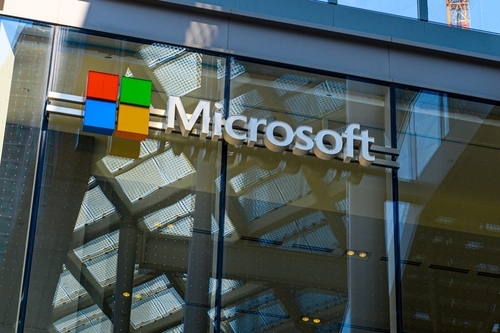FUSB Q2 EPS Falls 91%

Key Points
EPS fell sharply to $0.03, down 91.2% from the prior year, driven by a surge in loan loss provisions.
Loan and deposit growth returned, with gains of $23.1 million and $24.9 million, respectively.
Net interest margin (GAAP) stabilized sequentially, but remains below prior-year levels.
First Us Bancshares (NASDAQ:FUSB), a community-focused banking company operating in the southeastern United States, reported its latest quarterly earnings on July 30, 2025, covering results for the second quarter of fiscal 2025. The headline news was a significant decline in diluted earnings per share (GAAP), which dropped to $0.03 from $0.34 year-over-year, largely due to a $2.7 million increase in provision for loan losses. Growth in both loans and deposits provided some offset, while net interest margin (GAAP) showed a slight sequential improvement but remained below the prior-year mark. With no analyst estimates available for comparison, the overall assessment is that the quarter highlighted both solid balance sheet expansion and mounting credit risk challenges.
| Metric | Q2 2025 | Q2 2024 | Y/Y Change |
|---|---|---|---|
| EPS – Diluted | $0.03 | $0.34 | (91.2%) |
| Net Interest Margin | 3.59% | 3.69% | (0.10 pp) |
| Non-interest Income | $0.8 million | $0.8 million | 0.0% |
| Loan Portfolio (Period End) | $871 million | $819.1 million | 5.9% |
| Deposit Portfolio (Period End) | $987 million | $954.5 million | 3.4% |
| Tangible Book Value per Share | $16.41 | $15.92 | 3.1% |
Business Overview and Strategic Focus
First Us Bancshares is a regional bank with 15 branches and two loan production offices in Alabama, Tennessee, and Virginia. The bank serves both retail and business customers and conducts indirect lending in 17 states. Its main business activities revolve around collecting deposits, making loans, and providing a suite of banking services for individuals and businesses, including consumer lending, mortgage, and commercial real estate lending.
The bank’s growth strategy emphasizes expanding its loan and deposit base through both physical branches and digital banking offerings. Recent areas of focus include digital transformation, improving service convenience, and balancing risk through tighter credit controls. Regulatory compliance, competitive differentiation, and human capital management also remain central to sustaining its market position.
Quarterly Performance and Notable Developments
The quarter was defined by a steep drop in net income, as diluted earnings per share (GAAP) fell from $0.34 to $0.03 year-over-year. The main factor was a substantial increase in the provision for credit losses (GAAP), which jumped to $2.7 million from zero year-over-year. Of this, $1.4 million was tied to indirect lending—primarily loans secured by consumer purchases such as boats and RVs—while $0.9 million reflected credit concerns on two specific commercial loans, and $0.4 million stemmed from broader economic and model adjustments. This spike in credit provisioning more than offset increased pre-tax, pre-provision net revenue (non-GAAP), which rose by 5.2% year-over-year.
Loan growth was a highlight, as outstanding loans increased by $48.4 million year-to-date, or 5.9% (GAAP). The strongest contributions came from the consumer indirect segment, especially secured loans tied to retail purchases, and multi-family residential real estate lending. Average credit scores on these new indirect loans rose to 798 for the six months ended June 30, 2025.
Deposit balances rebounded by $24.9 million, reversing trends from earlier this year. The increase was attributed to higher balances in both interest-bearing demand accounts and brokered certificates of deposit. This growth helped keep the loan-to-deposit ratio at 88%. Non-interest income remained stable, while non-interest expenses increased by $0.5 million from Q1 and $0.2 million year-over-year.
Net interest margin was 0.10 percentage points lower year over year, even as industry-wide headwinds persist. Tangible book value per share, which measures how much book value supports each share, rose by 2.6% since December 31, 2024, reaching $16.41 per share—an important capital cushion, as the share price at quarter-end represented about 79% of this figure as of June 30, 2025.
The proportion of uninsured deposits dropped from 22.2% to 20.5% since December 2024.
Outlook and Investor Considerations
Management did not provide formal financial guidance for fiscal 2025 or for upcoming quarters. Instead, statements emphasized continued growth in digital banking and additional loan production, along with a focus on tightening credit standards and exploring opportunities for market expansion, including the potential for new loan offices or acquisitions.
For investors, the critical areas to watch include trends in asset quality, particularly in the consumer indirect and commercial real estate portfolios, as provisions for loan losses have begun to weigh on earnings. Increases in non-interest expenses and the dynamics of core deposit growth versus more volatile funding are also worth tracking. The quarterly dividend remained unchanged at $0.07 per share, following an increase last year.
Revenue and net income presented using U.S. generally accepted accounting principles (GAAP) unless otherwise noted.
Where to invest $1,000 right now
When our analyst team has a stock tip, it can pay to listen. After all, Stock Advisor’s total average return is 1,049%* — a market-crushing outperformance compared to 182% for the S&P 500.
They just revealed what they believe are the 10 best stocks for investors to buy right now, available when you join Stock Advisor.
*Stock Advisor returns as of July 29, 2025
JesterAI is a Foolish AI, based on a variety of Large Language Models (LLMs) and proprietary Motley Fool systems. All articles published by JesterAI are reviewed by our editorial team, and The Motley Fool takes ultimate responsibility for the content of this article. JesterAI cannot own stocks and so it has no positions in any stocks mentioned. The Motley Fool has no position in any of the stocks mentioned. The Motley Fool has a disclosure policy.





